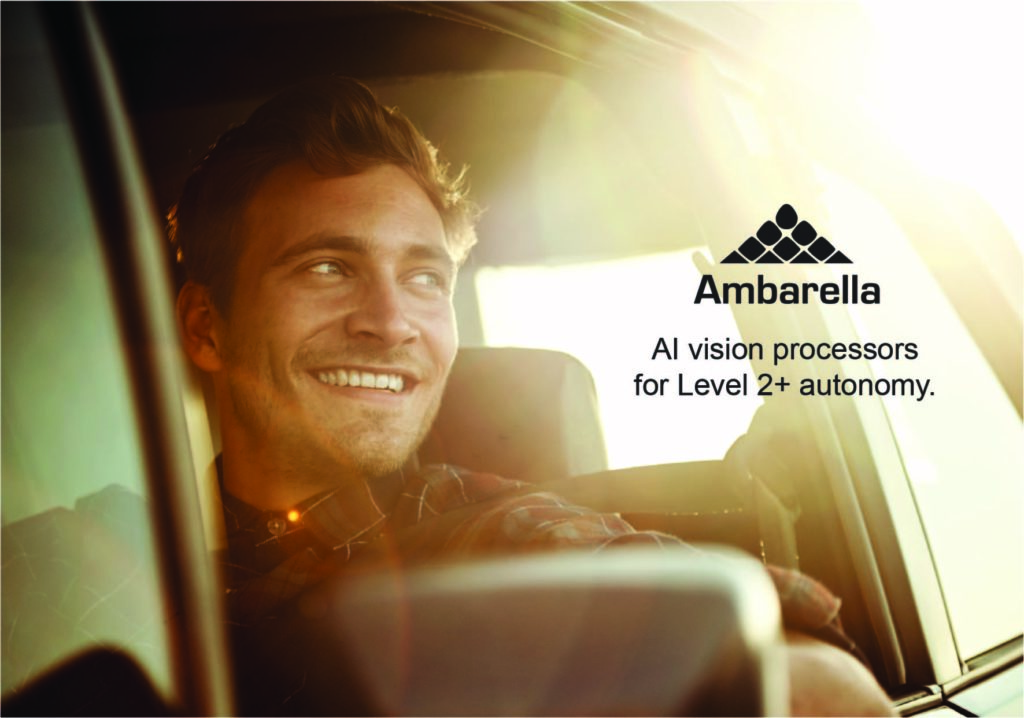This blog post was originally published at Ambarella’s website. It is reprinted here with the permission of Ambarella.
The road to vehicular autonomy will take a detour between Levels 2 and 3.
Hands-on, actively supervised self-driving features, including automated steering, acceleration, and braking, have seen a surge in popularity in recent years.
Pioneered by Tesla’s Autopilot, these semi-autonomous systems—once considered luxury items available on only a few select models—are becoming standard offerings across product lines. Consumers have demonstrated a willingness not only to accept these intelligent features, but to embrace them. Even demand them. And, as semi-autonomous functionality is absorbed into international safety standards (e.g., Euro NCAP 2024), it seems clear that these features are here to stay.
A number of terms have emerged to describe the concept of semi-autonomy, but L2+ is becoming increasingly common in the commercial space. While still considered partial automation (Level 2) on SAEs standard scale, the “+” indicates a far more complex set of safety- and convenience-related “driver support” capabilities that are considered atypical for Level 2 autonomy, including adaptive cruise control, lane change assist, lane keeping, highway merging, traffic jam support, parking assist, driver / occupant monitoring capabilities, and more.
In essence, L2+ transforms the task of driving into something more supervisory and managerial—the driver is expected to remain engaged and attentive, ready to take over at a moment’s notice—but otherwise the vehicle itself remains in command.

L2+ autonomy has the potential to create not only a safer driving experience, but a more enjoyable one as well. One piece of supporting evidence for this claim is, once again, the overwhelmingly positive reception of Tesla’s Autopilot feature among drivers, a feature which began as a paid add-on, but which is currently free. The fact that competing automotive manufacturers have followed Tesla’s lead, offering their own unique takes on the supervised self-driving concept (with similarly strong attach rates), serves as additional evidence that L2+ is just getting started.
But how is it defined, exactly?
The answer appears to be fluid, with the L2+ feature set ranging from basic lane-keeping all the way to what amounts to full self-driving. There is no established definition. However, L2+ does maintain one defining characteristic—no matter which features are enabled, L2+ assumes a hands-on, attentive driver behind the wheel. Anything more would venture into Level 3 territory. Likewise, at the lower end, the vehicle must be capable of controlling both steering and accelerating / decelerating (again, under driver supervision). This unique balancing act is what gives rise to the “+” designation.

If we look at the L2+ category from a more technical perspective, additional characteristics emerge that help define its boundaries:
- A centralized architecture with powerful compute capabilities is a must for L2+ execution—neural network performance is critical. The recognition of vehicles, lane markings, traffic lights, signs, pedestrians, and cyclists requires it. And because the feature set is a moving target, as mentioned previously, the working assumption must be that compute demands will increase over time.
- The successful implementation of L2+ requires over-the-air (OTA) software updates, which also has implications for resource requirements. Companies will continue to be pressured to include a degree of compute headroom in their L2+ solutions to account for the inclusion of additional functions in the future, enabled via OTA updates.
- And while we’re on the subject of software: the L2+ software stack is extraordinarily complex, encompassing nearly all of the elements required to support Level 4/5 self-driving. This includes sensor fusion, path planning, mapping, connectivity, OTA software updates, and more.
- Video recording is a requirement for L2+. Recordings serve as logs in case of accidents, but also facilitate fleet learning by sending relevant clips to the cloud for later annotation.
- Driver monitoring is an important feature of L2+. This is to remind vehicle operators of their responsibility to attend to the task at hand. In a world filled with easy distractions, this is non-negotiable. There are a number of ways to accomplish the task, but a camera-based driver monitoring system (DMS) can help tremendously.
“In essence, L2+ transforms the task of driving into something more supervisory and managerial—the driver is expected to remain engaged and attentive, ready to take over at a moment’s notice—but otherwise the vehicle itself remains in command.”
A look at our advantages
Now that we’ve established a reasonable working definition of the L2+ category, I’d like to present what we believe are our advantages in the space.
Our advantages include:
- Our CVFlow® embedded architecture, designed for high-efficiency, low-power AI acceleration, allows our customers to strike a truly unique balance between high performance and low power consumption.
- The ability to integrate viewing, sensing, and recording functionality in a flexible manner, using single-chip solutions, enhances our customers’ ability to respond to the complex needs of the L2+ segment.
- The VisLab team (founded in 1990 and acquired by Ambarella in 2015) remains a globally recognized leader in cutting-edge autonomous vehicle research, even after thirty years in the field. Led by founder and self-driving pioneer Alberto Broggi, the VisLab team puts Ambarella in a special position to understand the needs of L2+ applications and design our chips accordingly.
For more information, please contact us.
Senya Pertsel
Senior Director, Marketing, Ambarella


